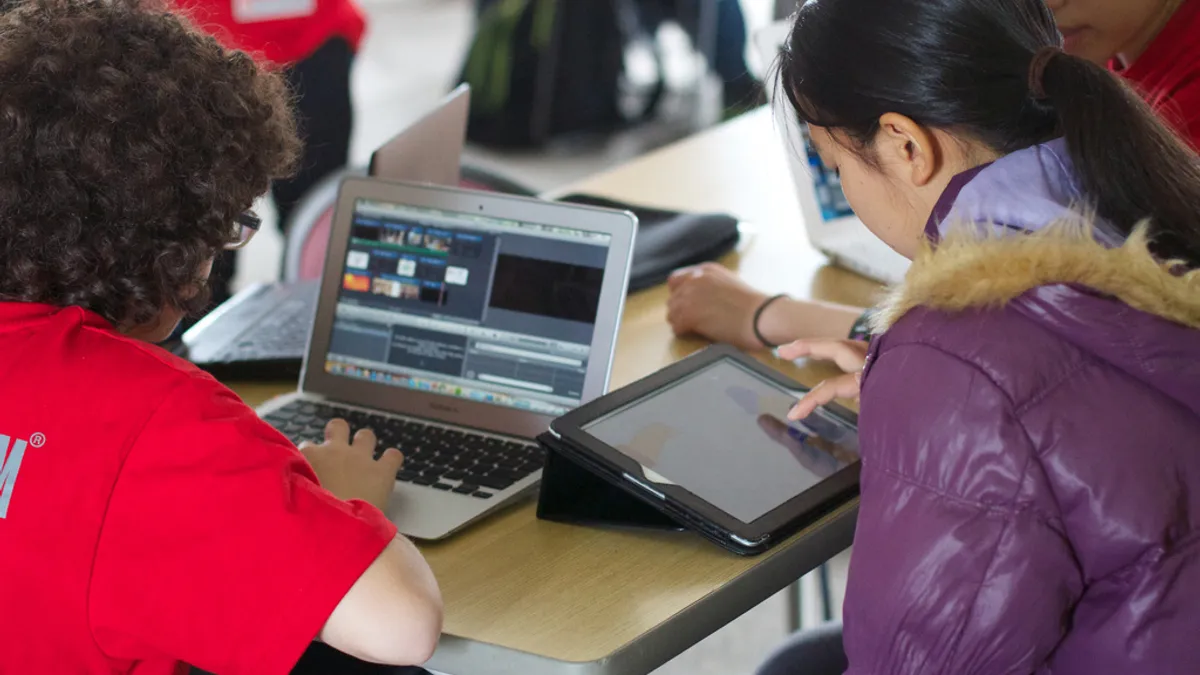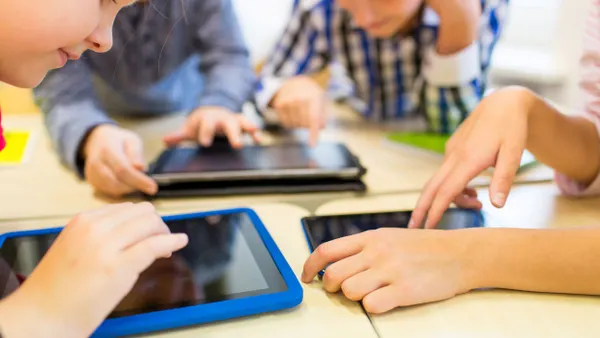Dive Brief:
- A new video in a promotional series for the Smarter Schools Project says that one rural school “is driving up attendance, motivating students, and bringing new opportunities” by letting students bring their own devices.
- Daisy Dyer Duerr, principal of Arkansas' St. Paul Schools, says that WiFi and BYOD in the form of cell phones enables students to “access resources they wouldn’t otherwise have.”
- For students who couldn’t afford their own devices, Duerr wrote grants to obtain funding.
Dive Insight:
Instead of schools providing tech hardware, BYOD programs let students bring their own personal devices — such as tablets, laptops, or cell phones — into the classroom. Although BYOD is a challenge for low-income students, solutions exist in the form of grants, donations, or collaborations with tech companies. In North Carolina, Google partnered with Charlotte-Mecklenburg Schools to provide 30,000 Chromebooks to middle schoolers at a discount rate, which the district partially covered via Race to the Top funds. As Education Dive previously reported, the New Media Consortium's K-12 Horizon Report shows 20% of U.S. classrooms will be implementing "bring your own device" programs by the end of this year.







 Dive Awards
Dive Awards






